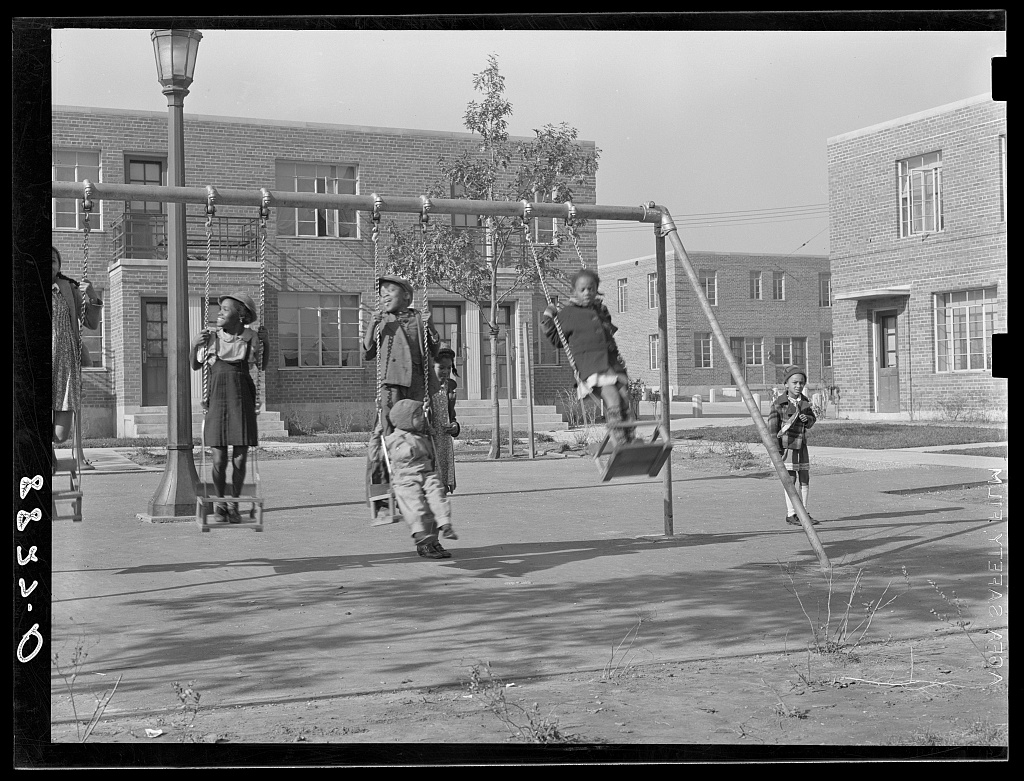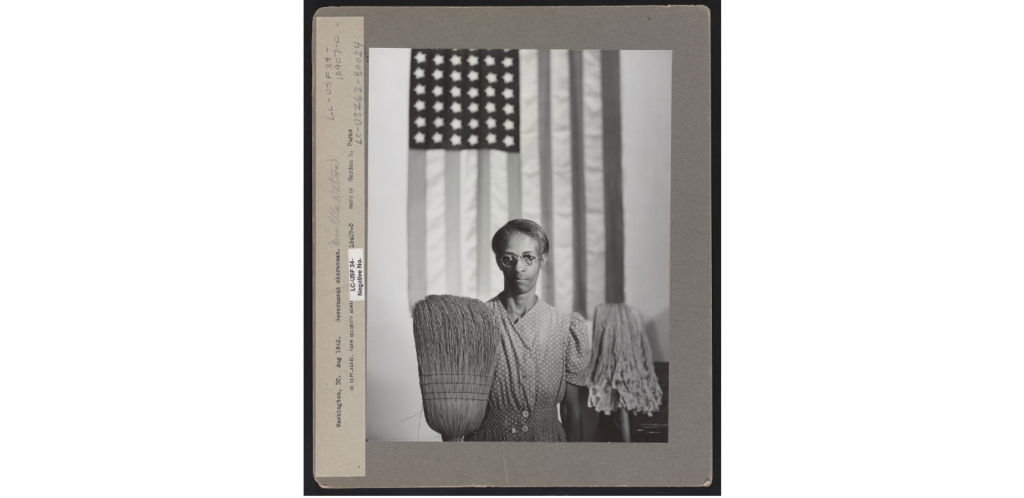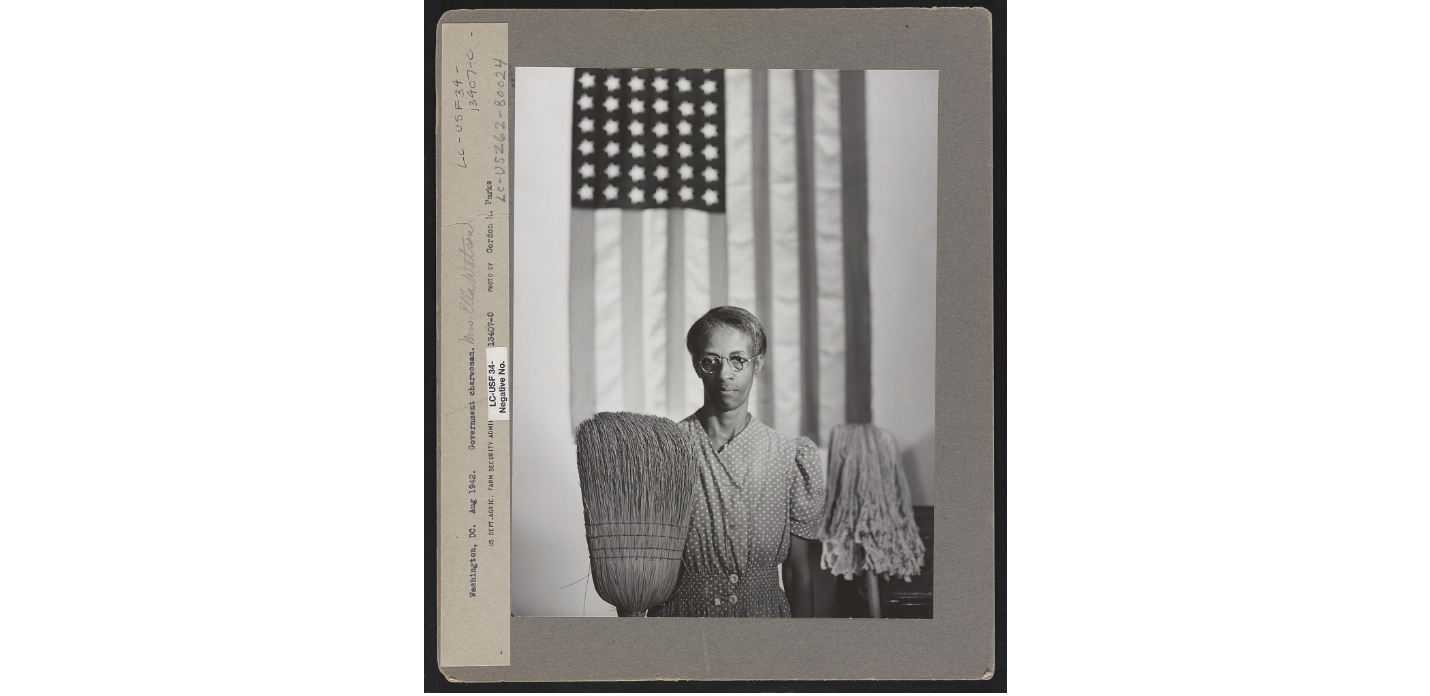This photo in a Kentucky food line during the Great Depression was taken by skilled, award-winning photographer, Gordon Parks. He worked for the federal government as part of a massive pictorial project. Gordon specialized in showing Black life in ways never before displayed.
Delving into the Past: Uncovering Family History through U.S. Government Photos
Picture this: You can locate your hard-to-find or perhaps unknown ancestors or important family landmarks through the free pictorial archives of the United States government. I found my father’s childhood home, Logan Fontenelle Homes in Omaha, Nebraska. Once my Dad saw it, he recalled where his neighbors lived and some of the children in the picture found below:

Not only did this photograph prompt my Dad to zero in on the housing development his family (Mom, brother, sister, and grandmother) moved into a few years after this photo was taken, it provided a guide to additional legacy conversations. Thanks to the ambitious nationwide pictorial project by the U.S. Government in the 1930s and 1940s, finding relatives — especially African American ancestors — can prove rewarding.
The backstory that explains the photographs
This blog will give you tips on how to narrow your searches to sites that likely hold images of your ancestors. I located my relatives in the photographs taken in the 1930s and 1940s by photographers employed by the Farm Security Administration and Office of War Information. It was an ambitious project that had multiple goals. One was to employ individuals during a time of desperate unemployment woes of the Great Depression and post-World War II.
When it comes to tracing your family history, there are a multitude of resources available to you. One often-overlooked source of valuable information is U.S. government photos. From census records to military photos, these images can provide a unique glimpse into the lives of your ancestors. By delving into the past through these official images, you can uncover hidden stories and connections that may have been lost to time.
The FSA and the OWI collectively produced approximately 175,000 black-and-white film negatives and 1,600 color photographs during the 1930s and 1940s. The separate agencies’ work was designed to display life during the Depression, Dust Bowl and in the post War World II era.
Tips on how to locate ancestors through pictures
- Begin with a general idea of who you are looking for and where the ancestors may have lived.
- Go to one of more of the following websites and begin your search: Farm Security Administration, Office of War Information,
- Suggestions on search leads are street names in towns, schools, famous persons, employment, transportation, summer fun and many more topics that may have passed through generations such as relatives catching fish with their bare hands in Eatonton, Ga. Guess what? I found photos proving this was true.
The caption reads: “Negroes catching small catfish with their hands. Bait to be used in shoals of Little River near Eatonton, Georgia”

- Closely study the photographs for bonus features such as names (often photographer Gordon Parks identified his subjects by names), locations, and occupations or themes.

What’s important about this photograph is the name of the subject, Ella Watson, and her occupation, charwoman. A charwoman cleans houses and offices for her wages.
Additional Research Tips from the Library of Congress
Unprinted negatives: You can search for “Untitled” to see images that did not come with a caption card bearing a title and are presumed not to have been printed. Most unprinted negatives simply have “Untitled” as their caption. Some have titles based on similar images that appear to have related content.
To view images that have a hole punched in them (an early method the agency used to indicate the negative should not be printed), you can search “hole punch.”
For insight on FSA selection of images to be printed, see: Fleischhauer, Carl. “Selecting Photographs for the FSA/OWI Print File: a Photo-Assignment Case Study: John Vachon’s Documentation of the Roanoke Farms Resettlement Project, Halifax County, North Carolina, April 1938” (25 June 2020). [pdf, 7.8 mb], http://www.loc.gov/rr/print/coll/Vachon_FSA-1938-RoanokeFarms.pdf.
Browse by Topic: Select from the Subject Index categories: Alphabetical listing or Classfication Number listing
FSA/OWI Written Records: View a description of the written records and a digitized selection of the documents
For a video overview of the collection, see “Documenting America, 1935-1943: The Farm Security Administration/Office of War Information Photo Collection.”
Here’s how a typical search appears
When you locate a photograph on the joint websites, beside the image, there is a lot of great information that can aid in locating ard-to-find relatives:

Negro clients listening to visiting public health official, Southeast Missouri Farms. La Forge, Missouri
- Title: Negro clients listening to visiting public health official, Southeast Missouri Farms. La Forge, Missouri
- Creator(s): Lee, Russell, 1903-1986, photographer
- Date Created/Published: 1938 Aug.
- Medium: 1 negative : nitrate ; 35 mm.
- Reproduction Number: LC-USF33-011582-M4 (b&w film nitrate neg.) LC-DIG-fsa-8a23398 (digital file from original neg.)
- Rights Advisory: No known restrictions. For information, see U.S. Farm Security Administration/Office of War Information Black & White Photographs(http://www.loc.gov/rr/print/res/071_fsab.html)
- Call Number: LC-USF33- 011582-M4 [P&P] LOT 1197 (corresponding photographic print)
- Other Number: F 318
- Repository: Library of Congress Prints and Photographs Division Washington, DC 20540 USA http://hdl.loc.gov/loc.pnp/pp.print
- Notes:
- Title and other information from caption card.
- Transfer; United States. Office of War Information. Overseas Picture Division. Washington Division; 1944.
- More information about the FSA/OWI Collection is available at http://hdl.loc.gov/loc.pnp/pp.fsaowi
- Subjects:
- Format:
- Collections:
- Part of: Farm Security Administration – Office of War Information Photograph Collection (Library of Congress)
- Bookmark This Record:
https://www.loc.gov/pictures/item/2017737158/
Unearthing All Hidden Connections
As you delve into locating family members through the U.S. government photos, use the free offerings as a launch or compliment to the images and artifacts in the basements, attics, garages, and other storage areas of your senior relatives. Ask about photographs and piece together fascinating stories.
A creative use is to link the government photographs with the other timelines in your family. Collect and arrange photographs in chronological order and begin with a lively narrative to bring your ancestors to life. Also, look for family resemblances in the government-supplied photographs.
Finally, note that this is another resource to match up information found in military records, the U.S. Census, passports, audio and video captures, and more.


